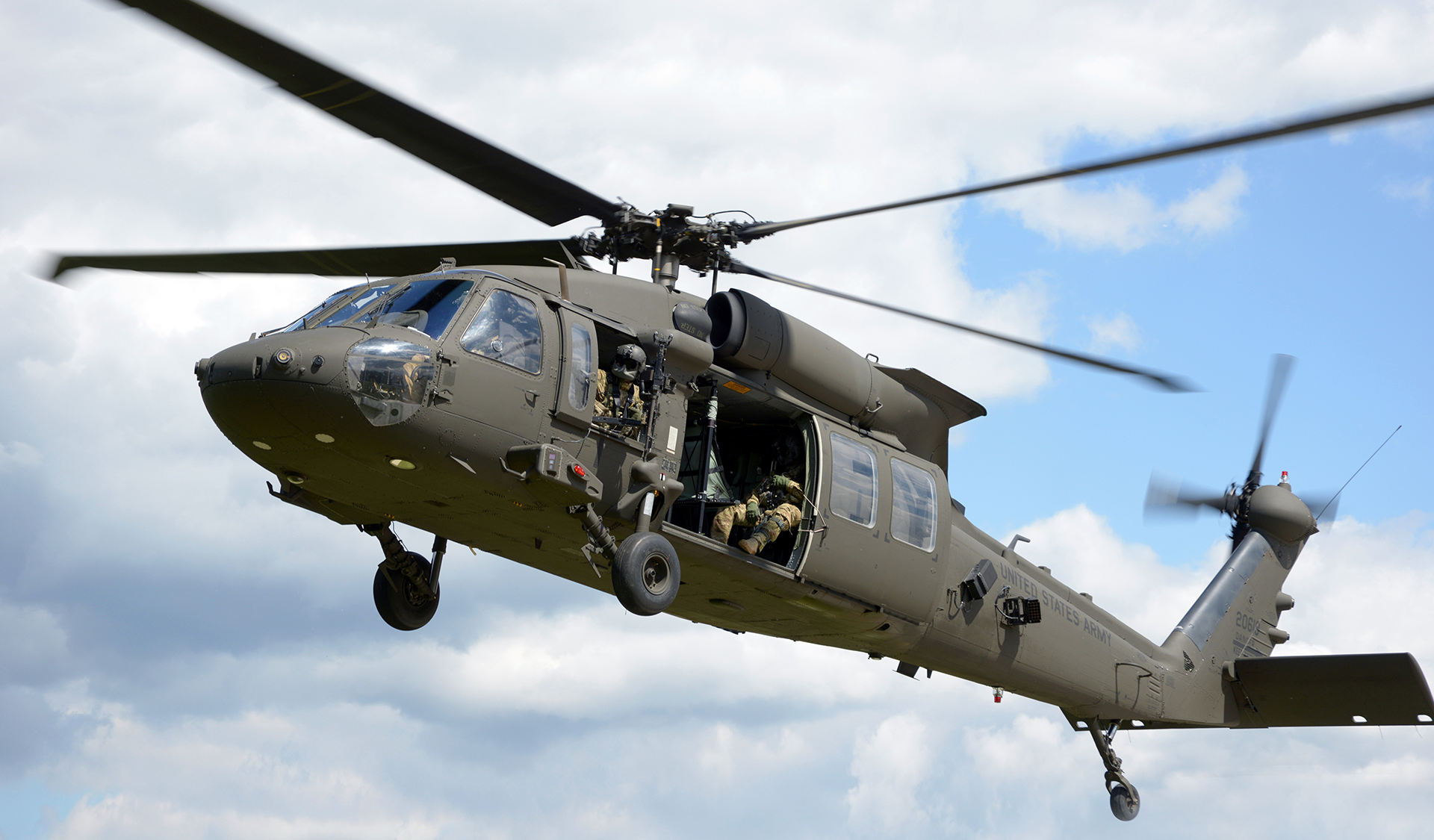The Future Potential Customers and Upcoming Advancement of the UH-60 Helicopter
The Future Potential Customers and Upcoming Advancement of the UH-60 Helicopter
Blog Article
In-Depth Evaluation of the UH 60 Helicopter: Unveiling Its Parts and Benefits
The UH-60 helicopter stands as a stalwart in contemporary aviation, renowned for its durable layout and diverse capacities. As we dissect this airborne workhorse, we will certainly explore its detailed components, from the engines that power its trip to the advanced avionics that direct its goals. Looking into the arsenal of weaponry and protective systems that fortify its function, we reveal a device that not just stands out in combat scenarios however additionally showcases versatility in diverse operational atmospheres. Join us as we untangle the layers of this airplane, revealing the advantages and nuances that make the UH-60 a cornerstone of armed forces and private aeronautics alike.
UH-60 Helicopter: Overview of Layout

Acquired from substantial research and growth, the UH-60 helicopter showcases a precise mix of functionality and wind resistant efficiency in its ingenious design. The UH-60's exterior includes a streamlined and streamlined body, designed to lessen drag and enhance its general efficiency in trip.
Additionally, the UH-60's blades system plays a critical role in its style, providing the required lift and ability to move for complex objectives. The primary rotor blades are meticulously crafted to optimize lift while the tail rotor makes sure security and control throughout flight. Furthermore, the helicopter's large inside can accommodate up to 20 travelers or a substantial quantity of cargo, making it a versatile and trustworthy transportation system. Basically, the UH-60 helicopter's design exemplifies an ideal balance between performance, performance, and flexibility, making it a staple in army procedures worldwide.


Engine and Propulsion System
The UH-60 helicopter's engine and propulsion system are important elements that power its procedures with performance and integrity. The UH-60, commonly known as the Black Hawk, is geared up with two General Electric T700-GE-701D engines, offering it with the required power to perform its varied objectives successfully. These turboshaft engines are renowned for their toughness and high efficiency, making them suitable for the UH-60's functional demands.
The propulsion system of the UH-60 helicopter includes an advanced main rotor system and a tail blades. The major blades is essential in producing lift and thrust, allowing the helicopter to remove, maneuver, and land efficiently. The tail blades, on the other hand, plays an essential role in counteracting the torque generated by the major rotor, guaranteeing the helicopter maintains directional control.
Avionics and Communication Tools

Armament and Defensive Functions
Enhancing the UH-60 helicopter's tactical capacities, the weaponry and defensive features play an important duty in ensuring mission success and crew security. The UH-60 is furnished with a selection of weaponries, consisting of door-mounted equipment weapons, rocket pods, and pintle-mounted device guns that offer suppressive fire abilities. These weapons improve the helicopter's adaptability in battle scenarios, permitting it to involve ground targets properly. In addition, the UH-60 can be furnished with sophisticated rocket systems to involve targets at longer arrays, better raising its lethality on the combat zone.
In regards to defensive functions, the UH-60 incorporates shield plating to shield the team and crucial elements from small arms fire and shrapnel. Moreover, the helicopter is equipped with innovative defensive help systems (DAS) that consist of radar warning receivers, projectile caution sensors, and countermeasure dispensers to find and deflect inbound hazards such as missiles and aggressive fire. These incorporated defensive systems considerably enhance the UH-60's survivability in high-threat atmospheres, permitting it to operate successfully in facility and challenging goals while prioritizing crew security.
Functional Benefits and Flexibility
Including sophisticated armament systems and robust protective features, the UH-60 helicopter demonstrates phenomenal operational advantages and adaptability in numerous goal circumstances. Its capacity to adapt to diverse roles such as troop transportation, medical emptying, search and rescue, and unique procedures makes it a very sought-after asset in military and civilian operations. The UH-60's twin-engine design offers added security and dependability, enabling it to operate successfully in difficult atmospheres and negative weather.
In addition, the helicopter's her response innovative avionics systems, consisting of GPS navigating and night vision abilities, enhance its operational effectiveness throughout goals performed in low-light setups or unknown territories. The UH-60's roomy cabin accommodates approximately 12 fully-equipped soldiers or several stretchers for medical discharge objectives, showcasing its versatility in meeting various functional needs quickly and efficiently.
Furthermore, the UH-60's rapid cruise ship speed and long endurance make it possible for fast deployment and continual procedures over prolonged distances, promoting quick reaction and prolonged goal durations when necessary. Overall, the UH-60 helicopter's functional advantages and versatility make it a functional and vital asset in a large range of objective circumstances, strengthening its credibility as a reliable workhorse in the air travel industry.
Final Thought
To conclude, the UH-60 helicopter flaunts a sophisticated style, advanced engine and propulsion system, innovative avionics and communication devices, and dependable weaponry and defensive functions. Its functional advantages and adaptability make it a highly in-demand aircraft for different goals and tasks. The UH-60's elements function with each other perfectly to give remarkable efficiency and capacities, making it a valuable asset in military and private procedures.
Report this page